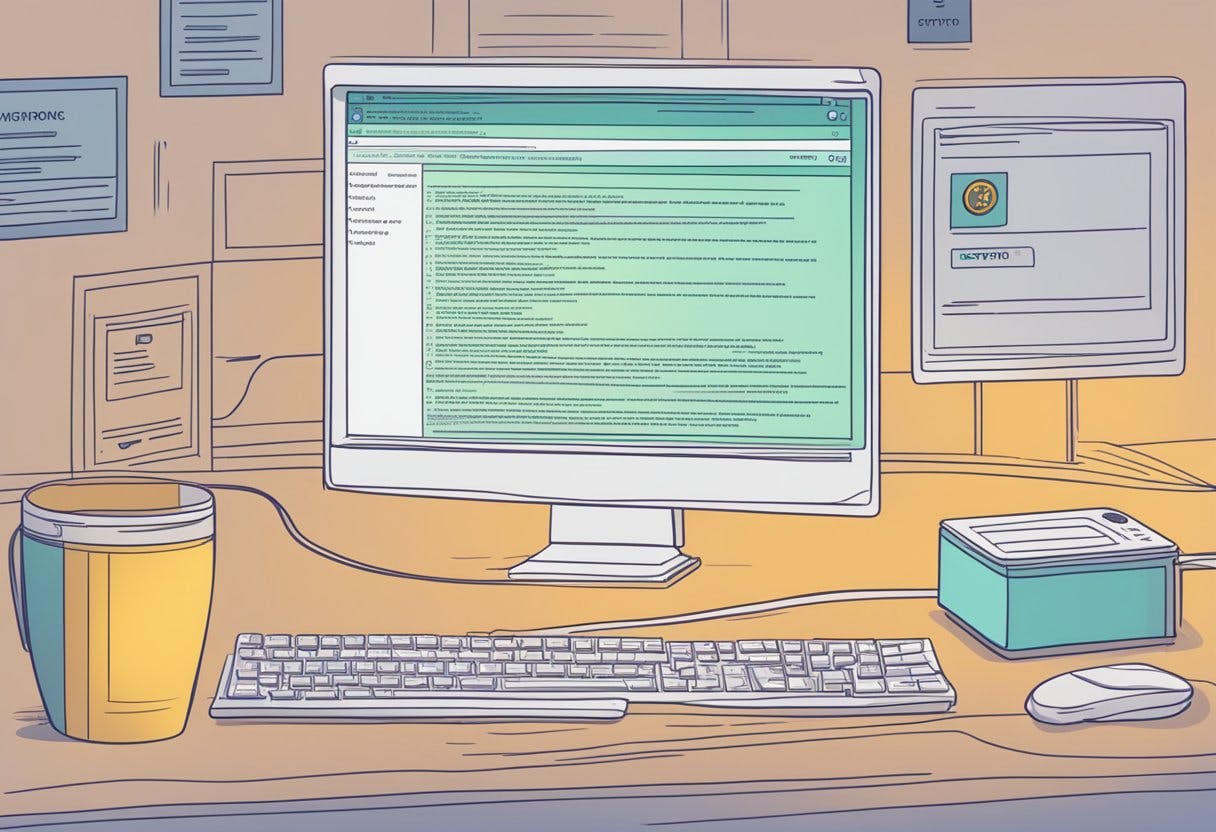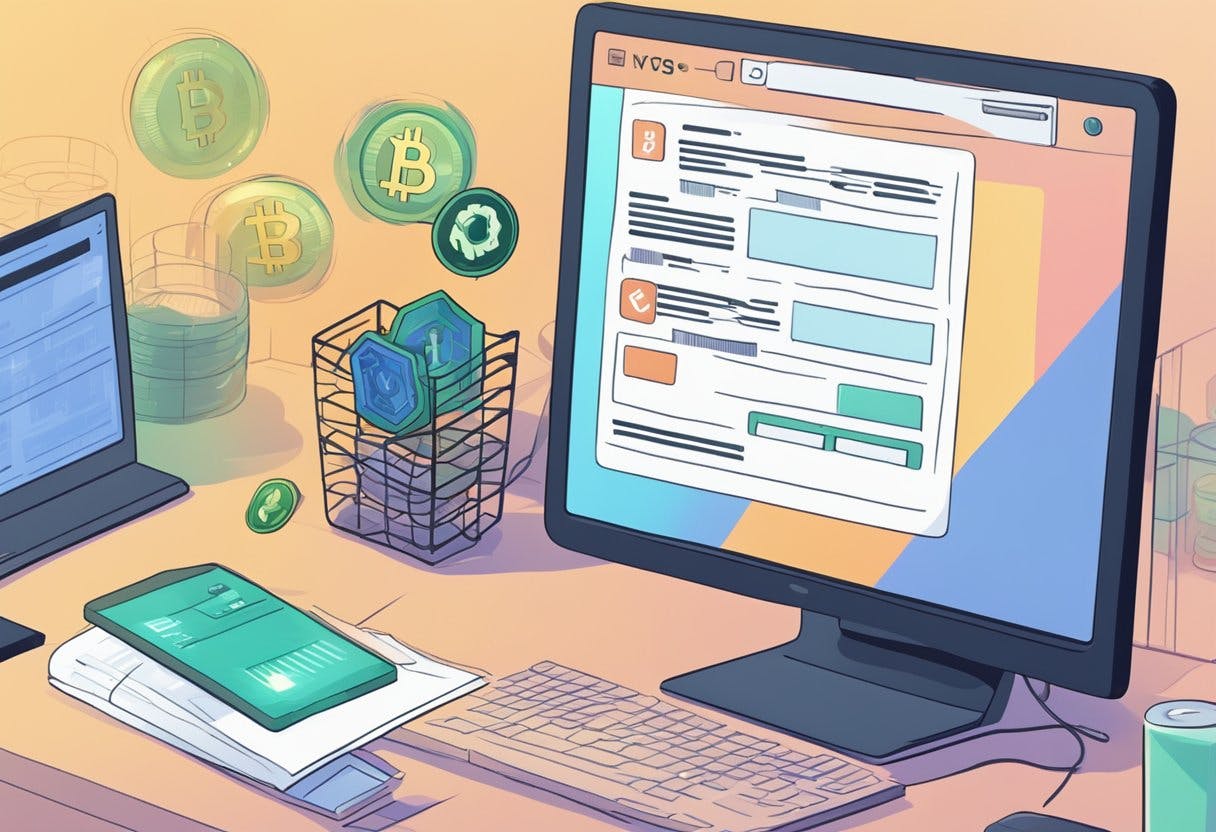
Crypto transactions are becoming increasingly popular as more people adopt cryptocurrencies as a means of payment. However, users may experience issues with their transactions being rejected. This can be frustrating and confusing, especially for those new to the world of crypto. Understanding the reasons behind rejected transactions and how to prevent them is crucial for a smooth and successful crypto experience.

There are several common reasons why crypto transactions may be rejected. These include insufficient fees, network congestion, and incorrect wallet addresses. Fortunately, there are also preventive measures that users can take to avoid these issues. By taking the necessary precautions, users can minimize the risk of their transactions being rejected and ensure that their crypto experience is hassle-free.
Key Takeaways
- Understanding the reasons behind rejected crypto transactions is crucial for a successful crypto experience.
- Common reasons for rejected transactions include insufficient fees, network congestion, and incorrect wallet addresses.
- Preventive measures such as setting appropriate fees, using reputable wallets, and double-checking wallet addresses can help avoid transaction rejection.
Understanding Crypto Transactions

The Role of Blockchain Technology
Cryptocurrency transactions are processed and verified using blockchain technology. Blockchain is a decentralized digital ledger that records transactions across a network of computers. Each block in the chain contains a record of several transactions and a unique code called a “hash.” The hash code is generated using complex mathematical algorithms and serves as a digital signature for the block.
The blockchain network is maintained by a network of nodes, which are essentially computers that store a copy of the blockchain ledger. Each node has a copy of the entire blockchain and is responsible for verifying transactions and adding new blocks to the chain. This decentralized structure ensures that the network is resistant to tampering and fraud.
How Transactions Work on the Network
When a user initiates a cryptocurrency transaction, the transaction details are broadcast to the network of nodes. Each node verifies the transaction by checking the user’s digital signature, ensuring that the user has sufficient funds to complete the transaction, and checking that the transaction details are accurate.
Once the transaction has been verified by the nodes, it is added to a block, along with other recently verified transactions. The block is then added to the blockchain, and the transaction is considered complete.
To initiate a transaction, a user must have a wallet address, which is a unique identifier that is used to send and receive digital assets. Each wallet address is associated with a private key, which is used to sign transactions and verify ownership of the assets.
In order to prevent transactions from being rejected, it is important to ensure that the transaction details are accurate and that the user has sufficient funds to complete the transaction. Additionally, users should ensure that they are using a reputable wallet provider and that their private key is kept secure.
Common Reasons for Rejected Transactions

Crypto transactions can be rejected for a variety of reasons, ranging from network congestion to insufficient transaction fees or incorrect transaction details. Understanding these common reasons can help you prevent future rejected transactions.
Network Congestion and Its Effects
Network congestion occurs when there are too many transactions being processed on the network at the same time. This can lead to slower transaction times and even rejected transactions. During periods of high congestion, transactions with higher fees are prioritized over those with lower fees. This means that if your transaction has a low fee, it may take longer to confirm or be rejected altogether.
Insufficient Transaction Fees
Transaction fees are used to incentivize miners to process transactions on the network. If the fee is too low, miners may not prioritize your transaction, leading to slower processing times or rejection. It is important to note that different cryptocurrencies have different fee structures, so it is important to research the fee requirements for the specific cryptocurrency you are using.
Incorrect Transaction Details
Incorrect transaction details, such as an incorrect address or amount, can also lead to rejected transactions. It is important to double-check all transaction details before submitting them to ensure that they are correct. Additionally, some cryptocurrencies have specific formatting requirements for addresses, so it is important to ensure that the address is formatted correctly.
By understanding these common reasons for rejected transactions, you can take steps to prevent them from happening in the future. This may include adjusting transaction fees, double-checking transaction details, or waiting for periods of lower network congestion.
Preventive Measures to Avoid Rejection
To prevent crypto transactions from being rejected, there are several measures that users can take. These measures include setting the appropriate fee, ensuring accurate transaction information, and monitoring network conditions.
Setting the Appropriate Fee
One of the most common reasons for transaction rejection is an inappropriate fee. To prevent this, users should set a custom fee that is appropriate for the transaction. The fee should be high enough to ensure that the transaction is included in the next block, but not so high that it becomes uneconomical.
Users can consult fee estimation tools to determine the appropriate fee for their transaction. These tools provide an estimate of the fee required to get a transaction included in the next block based on network conditions.
Ensuring Accurate Transaction Information
Another common reason for transaction rejection is inaccurate transaction information. Users should ensure that they enter the correct wallet address and amount when sending a transaction.
Users should also ensure that they provide the correct gas limit and gas price when sending a transaction on the Ethereum network. The gas limit is the maximum amount of gas that a user is willing to pay for a transaction, while the gas price is the price per unit of gas.
Monitoring Network Conditions
Finally, users should monitor network conditions to prevent transaction rejection. Users should check the current block time and the number of confirmations required for a transaction to be considered final.
Users should also monitor gas prices and network congestion to determine the appropriate gas price and gas limit for their transaction. High network congestion can result in higher gas prices and longer confirmation times.
By following these preventive measures, users can reduce the likelihood of transaction rejection and ensure the security of their crypto transactions.
Troubleshooting and Resolving Issues
What to Do with Stuck Transactions
Stuck transactions are transactions that have not been confirmed by the network yet. This can happen due to a variety of reasons such as low fees, network congestion, or other technical issues. In such cases, it is important to wait for some time before taking any action. If the transaction remains stuck for an extended period, users can try to speed up the confirmation process by increasing the transaction fee or using a Replace-By-Fee (RBF) feature.
Contacting Support Teams
If a transaction has been rejected or cancelled, users can contact the support team of the wallet or exchange they used to initiate the transaction. The support team can provide information on why the transaction was rejected or cancelled and offer solutions to resolve the issue. It is important to provide all relevant details such as transaction ID, wallet address, and amount while contacting the support team.
Using Replace-By-Fee (RBF) Feature
The RBF feature is a mechanism that allows users to replace an unconfirmed transaction with a new one that has a higher fee. This feature is available in some wallets and can be used to speed up the confirmation process of stuck transactions. To use the RBF feature, users need to make sure that the wallet they are using supports it and enable it before initiating the transaction.
In addition to the above methods, users can also try to avoid transaction rejection by ensuring that they use the correct wallet address, double-checking the transaction details before initiating it, and paying the appropriate transaction fee. Users can also copy and paste the wallet address instead of typing it manually to avoid errors. If a transaction has been cancelled or reversed, users can request a refund from the wallet or exchange they used to initiate the transaction.
By following these simple steps, users can troubleshoot and resolve most issues related to rejected or stuck transactions.
Advanced Considerations for Crypto Users
Understanding Smart Contracts and Gas Fees
Smart contracts are self-executing contracts that are stored on a blockchain network. They are designed to automatically enforce the terms of an agreement between two parties, without requiring intermediaries such as banks or lawyers. Smart contracts are a key feature of blockchain technology, and they are widely used in decentralized finance (DeFi) applications.
However, executing a smart contract requires a certain amount of computational power, which is measured in gas. Gas is the fee paid to miners to execute a transaction on the Ethereum network. The gas fee varies depending on the complexity of the smart contract, the current network congestion, and the gas price set by the user.
To prevent rejected transactions due to insufficient gas fees, it is important to set the gas price high enough to cover the current network congestion. Users can check the current gas price on websites such as Blockchain.com and adjust their gas price accordingly.
The Impact of Market Volatility on Transactions
Market volatility can have a significant impact on the cost and speed of cryptocurrency transactions. During periods of high market volatility, transaction fees can increase dramatically, and transaction times can become much slower. This is because miners prioritize transactions with higher fees, and the increased demand for block space can cause network congestion.
To avoid rejected transactions due to high fees, users can monitor the current market conditions and adjust their transaction fees accordingly. They can also consider using layer 2 scaling solutions such as the Lightning Network, which can reduce transaction fees and increase transaction speeds.
It is important for crypto users to be aware of the risks associated with cryptocurrency transactions and make informed decisions based on their individual risk tolerance. By understanding smart contracts, gas fees, and market volatility, users can take steps to prevent rejected transactions and ensure the smooth execution of their transactions.
Frequently Asked Questions
What causes a cryptocurrency transaction to fail?
There can be several reasons why a cryptocurrency transaction fails. Some common reasons include high network congestion, low transaction fees, incorrect wallet address, or insufficient funds. It is important to double-check all transaction details before initiating a transfer to ensure that all information is accurate.
How can I resolve a Bitcoin transaction that remains unconfirmed?
If a Bitcoin transaction remains unconfirmed, it could be due to low transaction fees or network congestion. One way to resolve this issue is to increase the transaction fees to incentivize miners to prioritize the transaction. Another option is to use a transaction accelerator service, which can help speed up the confirmation process.
What steps should I take if my bank declines a cryptocurrency purchase?
If a bank declines a cryptocurrency purchase, it could be due to anti-fraud rules or policies. It is recommended to contact the bank to understand the reason for the decline and to ensure that the account is in good standing. Alternatively, one can consider using a different payment method or cryptocurrency exchange.
Why isn’t my Bitcoin transaction appearing on the blockchain?
If a Bitcoin transaction is not appearing on the blockchain, it could be due to several reasons such as low transaction fees, network congestion, or an incorrect transaction ID. It is recommended to double-check all transaction details and to wait for at least 24 hours before taking any further action.
What should I do if a Bitcoin ATM transaction doesn’t go through?
If a Bitcoin ATM transaction doesn’t go through, it could be due to several reasons such as network issues, incorrect wallet address, or insufficient funds. It is recommended to contact the ATM operator or customer support to resolve the issue.
How can I ensure my crypto transactions are not rejected by my wallet?
To ensure that crypto transactions are not rejected by a wallet, it is important to keep the wallet software up to date and to double-check all transaction details before initiating a transfer. Additionally, it is recommended to use a wallet that supports the specific cryptocurrency being transferred and to ensure that there are sufficient funds in the wallet.
Read More




